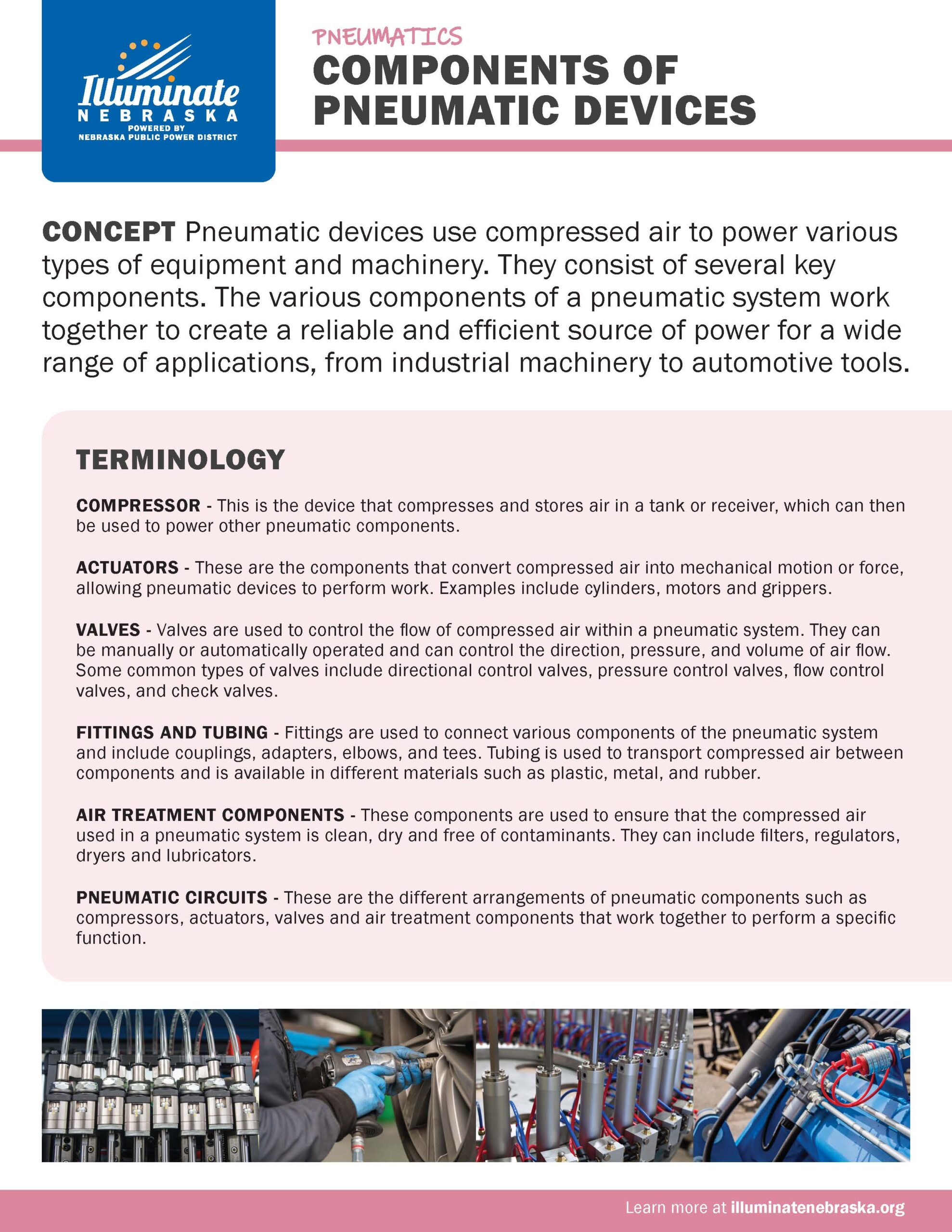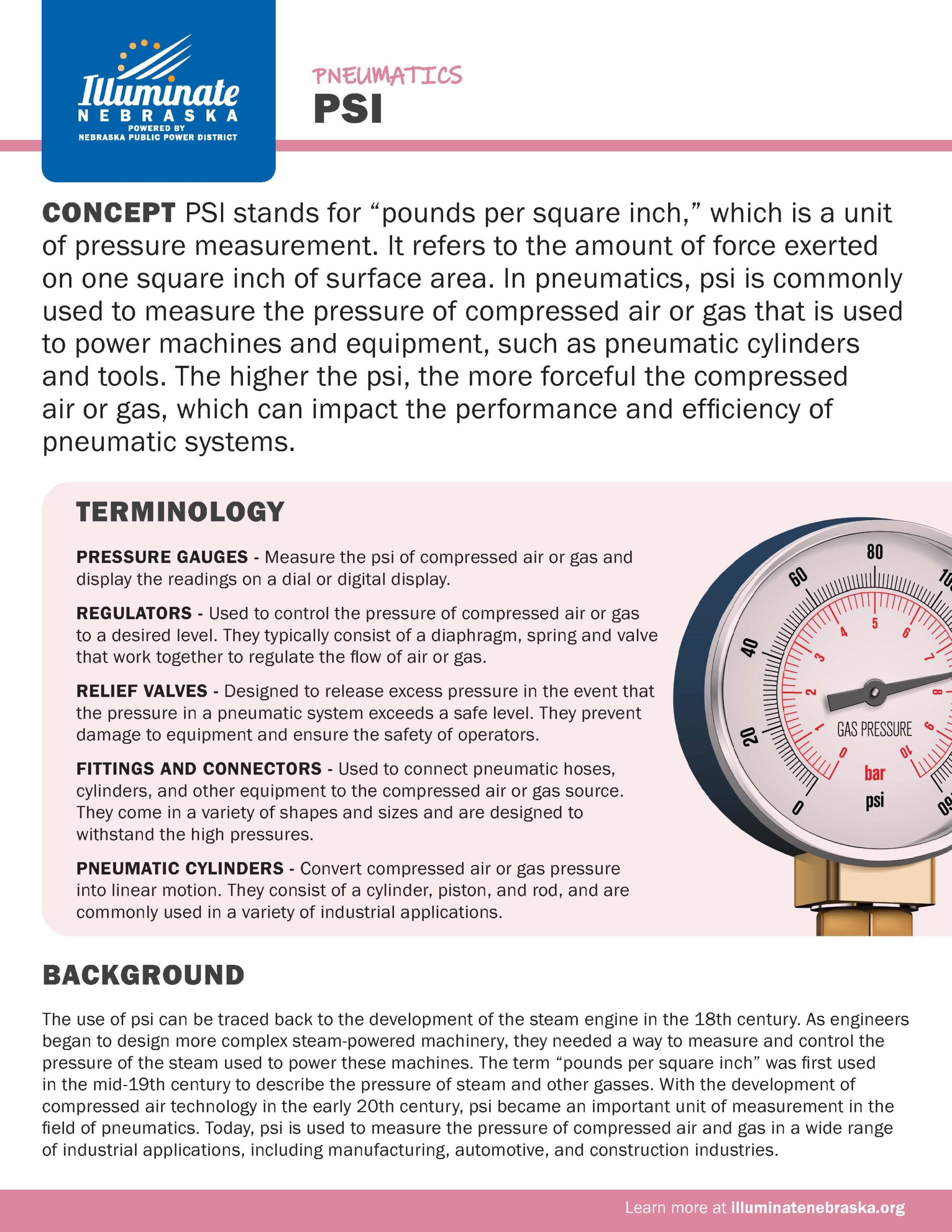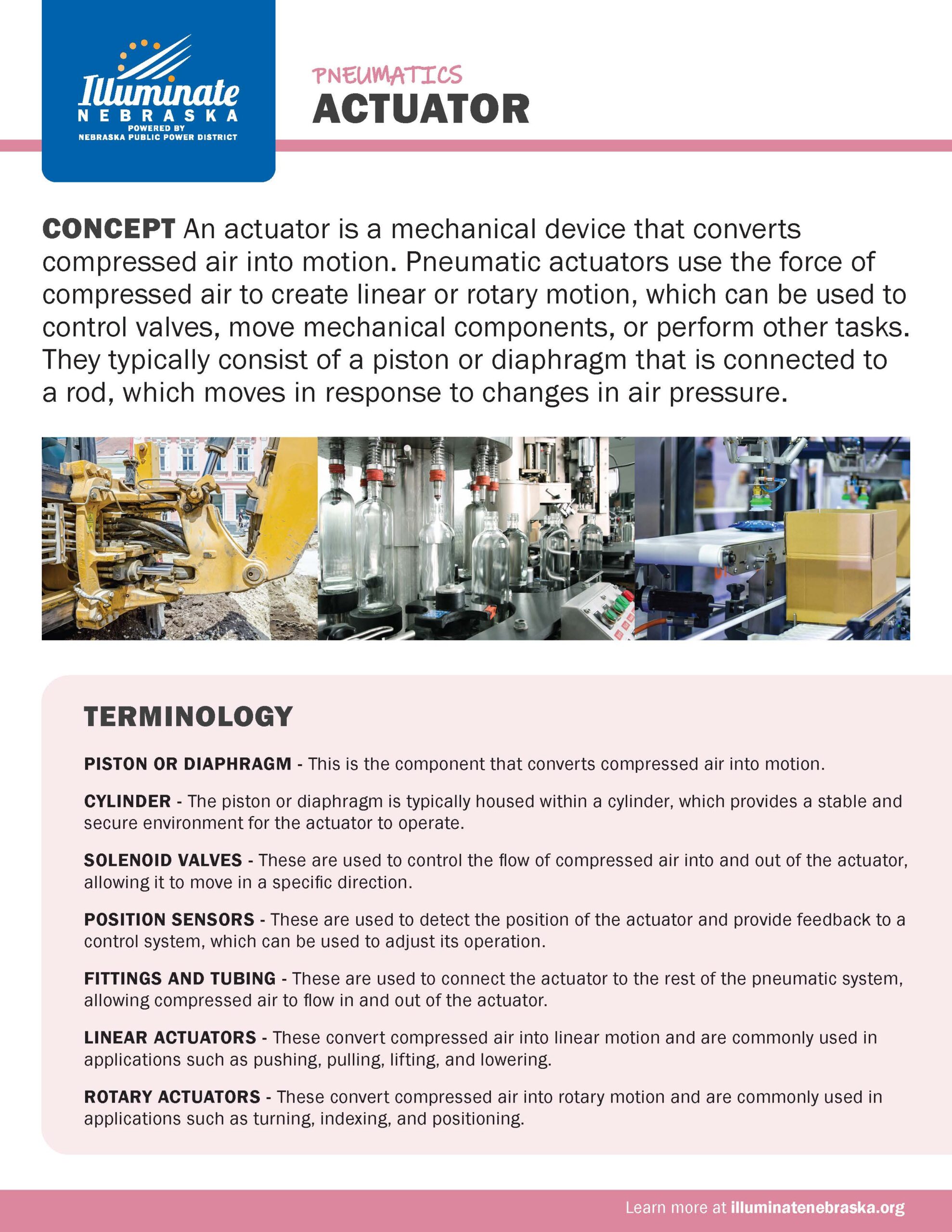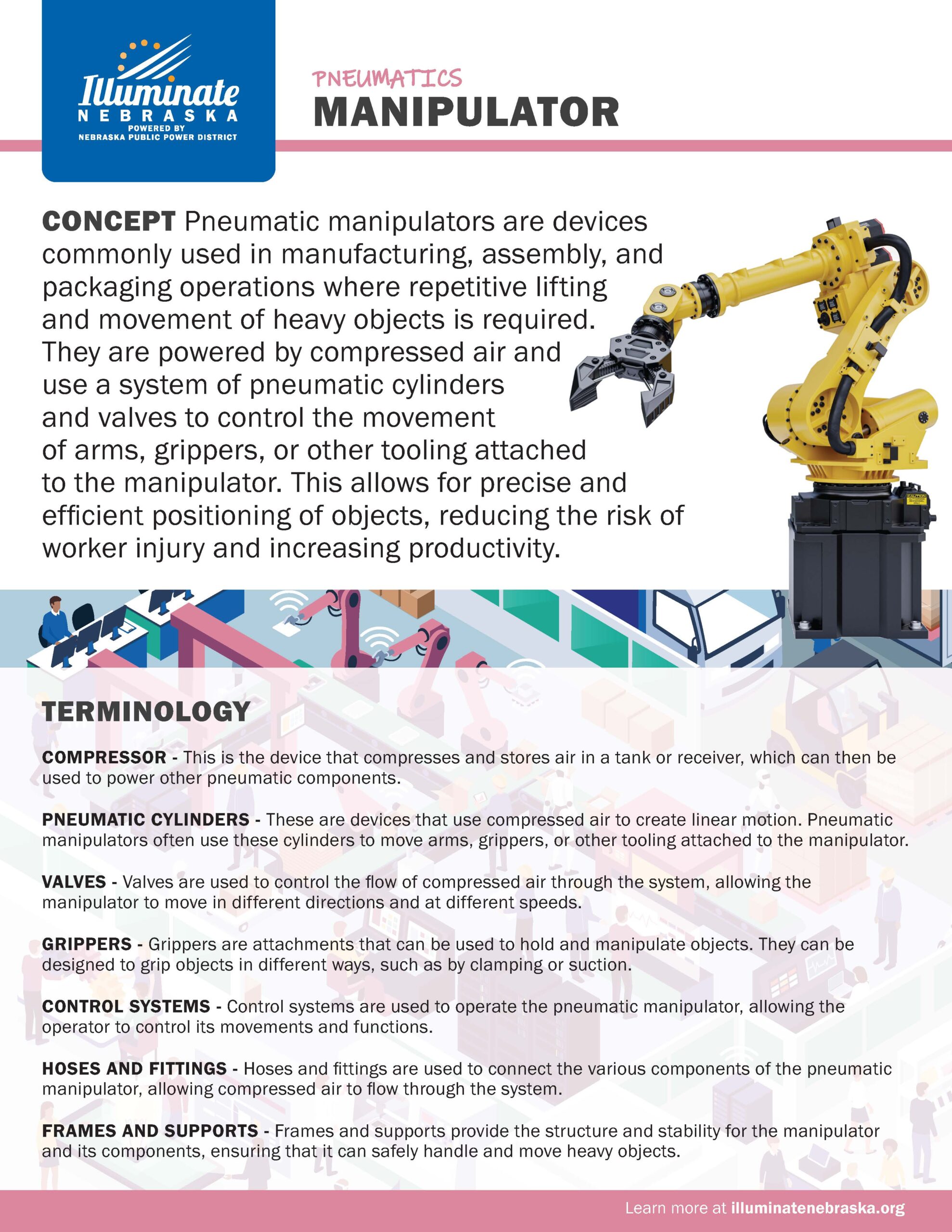Bernoulli’s Principle
Bernoulli’s Principle is found commonly with the flow of fluids in different types of pumps and systems such as hydraulics. It also explains the basic principles of flight and how to design aircraft to best use air pressure.
Components of Pneumatic Devices
Pneumatic devices use compressed air to power various types of equipment and machinery. They consist of several key components. The various components of a pneumatic system work together to create a reliable and efficient source of power for a wide range of applications, from industrial machinery to automotive tools.
PSI
PSI stands for “pounds per square inch,” which is a unit of pressure measurement. It refers to the amount of force exerted on one square inch of surface area. In pneumatics, psi is commonly used to measure the pressure of compressed air or gas that is used to power machines and equipment, such as pneumatic cylinders and tools.
Actuator
An actuator is a mechanical device that converts compressed air into motion. Pneumatic actuators use the force of compressed air to create linear or rotary motion, which can be used to control valves, move mechanical components, or perform other tasks. They typically consist of a piston or diaphragm that is connected to a rod, which moves in response to changes in air pressure.
Manipulator
Pneumatic manipulators are devices commonly used in manufacturing, assembly, and packaging operations where repetitive lifting and movement of heavy objects is required. They are powered by compressed air and use a system of pneumatic cylinders and valves to control the movement of arms, grippers, or other tooling attached to the manipulator.





